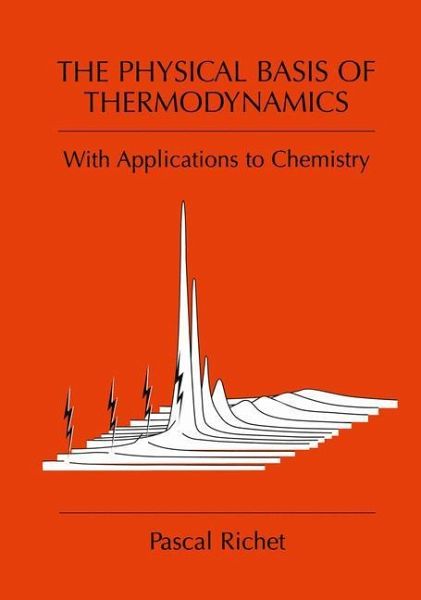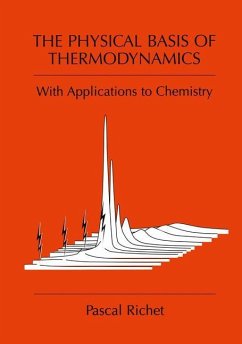
The Physical Basis of Thermodynamics
With Applications to Chemistry
Versandkostenfrei!
Versandfertig in 1-2 Wochen
115,99 €
inkl. MwSt.
Weitere Ausgaben:

PAYBACK Punkte
58 °P sammeln!
And, that is how the text comes across to the reader.' Dawn Lee Wakefield, Ph.D. (Texas A&M)
Given that thermodynamics books are not a rarity on the market, why would an additional one be useful? The answer is simple: at any level, thermodynamics is usually taught as a somewhat abstruse discipline where many students get lost in a maze of difficult concepts. However, thermodynamics is not as intricate a subject as most people feel. This book fills a niche between elementary textbooks and mathematically oriented treatises, and provides readers with a distinct approach to the subject. As indicated by the title, this book explains thermodynamic phenomena and concepts in physical terms before proceeding to focus on the requisite mathematical aspects. It focuses on the effects of pressure, temperature and chemical composition on thermodynamic properties and places emphasis on rapidly evolving fields such as amorphous materials, metastable phases, numerical simulations of microsystems and high-pressure thermodynamics. Topics like redox reactions are dealt with inless depth, due to the fact that there is already much literature available. Without requiring a background in quantum mechanics, this book also illustrates the main practical applications of statistical thermodynamics and gives a microscopic interpretation of temperature, pressure and entropy.
This book is perfect for undergraduate and graduate students who already have a basic knowledge of thermodynamics and who wish to truly understand the subject and put it in a broader physical perspective. The book is aimed not at theoretical physicists, but rather at practitioners with a variety of backgrounds from physics to biochemistry for whom thermodynamics is a tool which would be better used if better understood.
This book is perfect for undergraduate and graduate students who already have a basic knowledge of thermodynamics and who wish to truly understand the subject and put it in a broader physical perspective. The book is aimed not at theoretical physicists, but rather at practitioners with a variety of backgrounds from physics to biochemistry for whom thermodynamics is a tool which would be better used if better understood.














